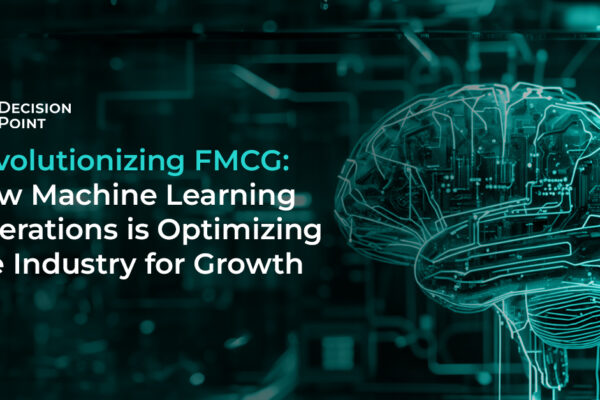3 skills every CIO should have to succeed in the post-covid world.
Critical CIO skills in the post covid world – TBH, there is hardly any context needed for this topic. The criticality of a CIO’s role in the organization is undeniable and undisguised. Interestingly and rightfully so, this role that was up for a debate for its viability has gained immense traction and popularity in businesses in the last few months.
Enough has been talked about the systemic and systematic impact of covid19 on the economy and businesses. And the aspects that have come out distinctively and significantly are – ‘Technology’ and ‘Information’. This brings CIOs in the spotlight.
In a recent rendezvous with the shareholders, Nandan Nilekani said “…Whether it’s the uptick in online demand, mastery over digital demand fulfilment or tackling the threat of cyberattacks, technology has become an urgent and critical business capability.”
CIO being the lynchpin for leading technology and facilitating information is a conversational hotspot these days. They are responsible for making quintessential shifts in the organizations to accelerate the digital transformation towards maintaining business continuity and ensuring growth in the post covid ecosystem.
While the role of CIOs has been discussed to death, we dug into the skills that they need to carry out their roles in this hyper-competitive space, where survival is as critical as the need to grow.
This also means that CIOs need to operate with 2-pronged objectives – a) create a robust system to make sure that the systemic disruptions do not meddle with the fabric of organizational culture b) develop strategies and capabilities that enable future success.
We pinned down 3 critical skills that are a must have for a modern-day, post pandemic CIO to be successful in their role.
1. Design Thinking
Businesses have experienced extreme burns led by the pandemic. There is very little scope of failure for leaders right now. While innovation is the need for survival, blind experimentation can backfire pretty hard.
Design thinking skill refers to the ability of a CIO to empathise with the user, look at a problem from the end-user perspective – the outside-in approach, understand how the user perceives the problem and how they interact with the solution – not how businesses think they interact with the solution, big difference! And be able to make necessary iterations in phases that incrementally lead to creating unique and useful solutions.
A simple example would be investing in solutions that cost a bomb to the company with little understanding of how end-users would interact with it, or how well would that solution fit in the organizational ecosystem. Imagine creating a digital HR platform which is more difficult to operate for your HR team than following the traditional process of accessing the information!
2. Scenario based Planning/Scenario Thinking
Scenario based planning – simply put as ‘rehearsing for the future’. Sounds ironic given the scenario we are currently operating in that no one could anticipate. But that is also what makes it crucial to explore the world of future possibilities and strategize the best course of action for each of them.
It’s easy for a leader to fall into the trap of responsive decision making in the face of a disruptive event, thinking about the short-term gains, especially when there is so much turmoil around them. The long term ‘what-ifs’ take a back seat in such rapidly changing environments. But that’s where this skill differentiates progressive leaders from the rest.
The approach triggers creative thinking for these leaders responsible for digital transformation in organizations.
“Scenario-based planning is a core skill for digital transformation leaders: we talk about use cases all the time. Clearly defining critical data and triggers for decision making are an inherent part of governance that leverages stage gates as a key decision framework.” – IDC
Every organization is potentially thinking of new investments needed in the digitization space to thrive in the post pandemic era. It falls on the shoulders of a CIO to be able to navigate through possible future scenarios based on many assumptions and align strategic actions to each of the scenarios.
Imagine integrating a B.I tool in one of the functions in your organization and not be able to control or deal with the outcomes. Scenario thinking approach enables companies to react in the most effective way as conditions change.
3. Network Thinking
This one is probably one of the most critical capabilities of a modern-day CIO. For a very long time, the function and focus of a CIO has been very limited in scope. But that thinking has changed 360 degrees in today’s context. Be it employee engagement, product strategy, or trade initiatives planning, organizations are seeking massive digital transformations and a CIOs role is pivotal in making these transformations possible and actionable.
The CIO of the future must be able to work and think in networks. How would the investment or technology implementation in one area impact the other functions? How will a decision impact people, processes, and systems independently and as a whole?
“Hybrid work is here to stay, requiring organizations and their people to find new ways to come together, collaborate and deliver seamlessly.” – Nandan Nilekani
When we refer to the new ways of working, we emphasize on the role of a CIO to build capabilities – people and technology, that make access to people and access to information simple and effective.
The ‘C’ in the CIO stands for ‘Courage’. They are responsible for deconstructing old models and processes and creating the most innovative solutions while optimizing IT budgets, supporting business recovery. The pressure to prioritize, transform and grow is immense. CIOs have the responsibility to build a customer-centric and data-driven business environment that puts them at the forefront of the sustainable business transformation.






